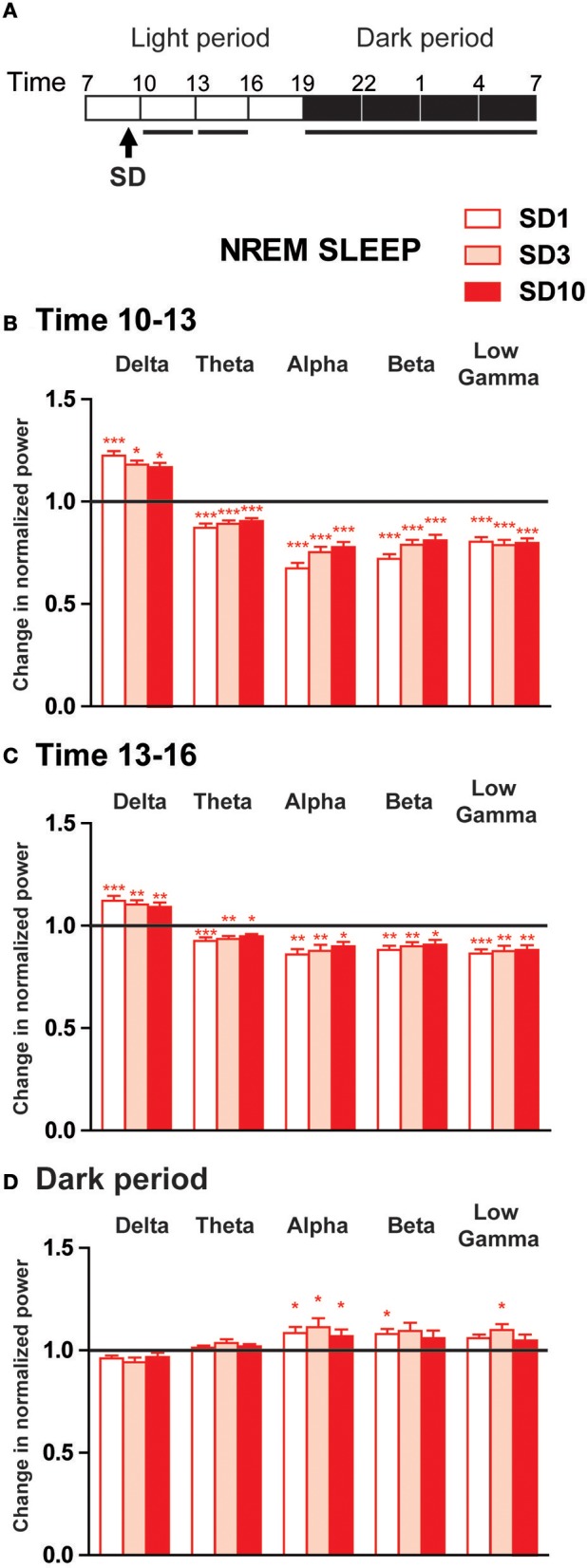Figure 3.

Power spectra analysis of the EEG frequency bands within NREM sleep during the first 6 h and the dark period after the social defeat session in susceptible mice. (A) Daily experimental timeline. Power spectra were analyzed during the first two 3-h time windows and the 12 h of the dark period after the SD sessions as indicated by the black bar above the respective recording days (SD1, SD3, SD10). (B–D) Changes in normalized relative EEG power spectrum on days SD1, SD3, and SD10 compared to BL during NREM sleep in susceptible mice (n = 8). For each time window tested during the light period [10–13 h (B) and 13–16 h (C)] and during the dark period [7 p.m.−7 a.m. (D)], changes in relative normalized EEG power in each power band (delta: 0.5–4.99 Hz, theta: 5–9.9 Hz, alpha: 10–12.99 Hz, beta: 13–29.99 Hz and low gamma: 30–50 Hz) were expressed as a ratio of individual relative values obtained on each SD session over BL. For each mouse, relative values were obtained by dividing each power band over the sum of all values from 0.5–50 Hz. All data are expressed as means ± SEM of eight susceptible mice. Statistical analysis was performed on relative EEG power in each power band. For multiple group comparisons: *P < 0.05, **P < 0.01, and ***P < 0.001, significantly different from the control conditions (BL); for statistics see Table S1.
